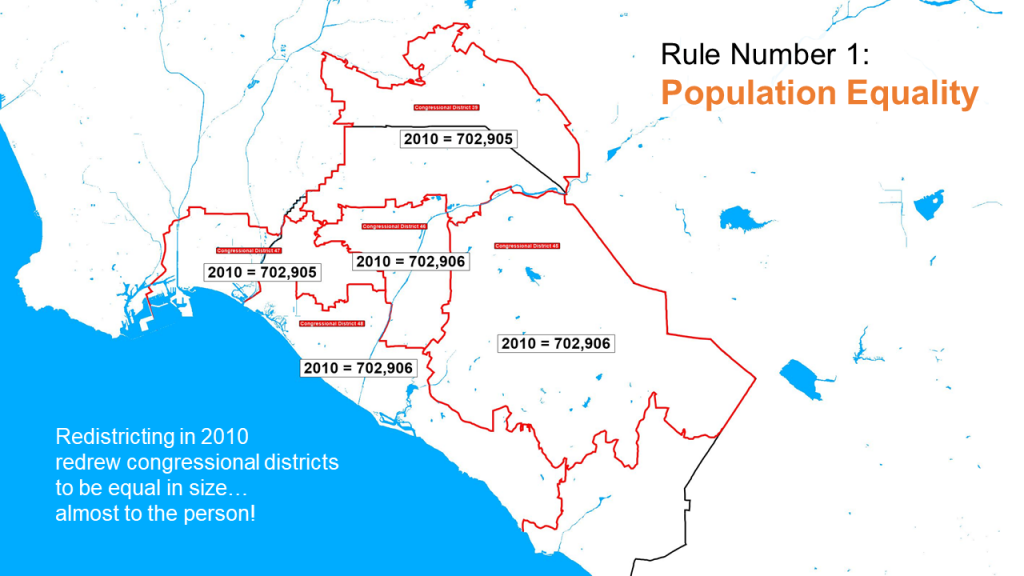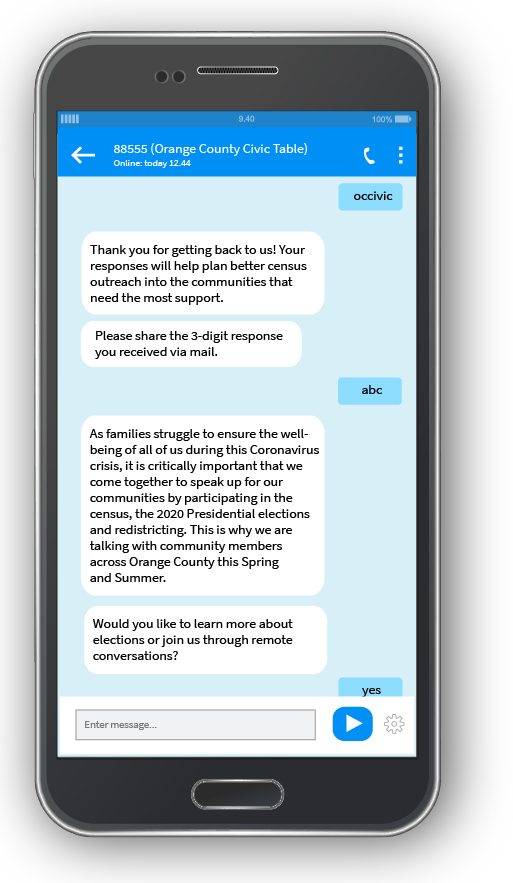While Congressional redistricting has a much higher profile, local government agencies – including cities, school districts and Orange County – also are preparing to draw new boundaries this year that will serve them until the 2030 census.
It’s likely to be a bigger deal for the county (whose five supervisors each represent a geographic area) and for the many cities, school districts and special districts that have switched to district-based voting in the last several years where elected leaders now are chosen from their geographic sector of the community.
But by law, everyone has to go through redistricting every 10 years – when data from the decennial census comes out – to ensure residents are getting equitable representation.
Orange County is one of the first to kick off the process locally, with OC Registrar of Voters Neal Kelley offering “redistricting academy” sessions this month to help local officials through the process and the county planning public workshops in each supervisorial district in August. And residents in some cities are already seeing invitations to community workshops.
The pandemic has made the process a bit more challenging because it delayed census data collection, so state and local governments may not get the information they need until the end of September, several months later than normal.
Most cities and school districts don’t have seats on the ballot until November 2022, so they have a bit longer to redraw their district lines. But the county is still required to have its new maps ready by Dec. 15, so that crunches the schedule for community input, including public meetings and allowing people to draw and submit their own suggested maps, said Jessica Witt, the county’s government and community relations director.
What’s changed?
Although the official numbers aren’t in yet, up-to-date estimates from the state Department of Finance show Orange County’s population grew by just under 5% – adding about 143,000 residents – since 2010, said Deborah Diep, director of Cal State Fullerton’s Center for Demographic Research, which is working with the county on its redistricting effort.
Those state figures show Irvine grew the most of any OC city, by far, with nearly 60,000 more residents since the last full census. Five other cities and the county’s unincorporated area added more than 5,000 people each in that time, but Anaheim was the only one besides Irvine to break into five digits (with roughly 17,000 new residents).
The growth in nine cities can be counted in the hundreds, and six cities saw their populations shrink a bit since 2010, though none showed a dramatic loss.
What does that mean for the county and any cities or other agencies that use by-district representation? As they draw new lines, officials have to consider a number of factors, said Senior Assistant County Counsel Nicole Walsh:
- Districts must be roughly equal in population (no more than 10% difference between the biggest and smallest)
- As much as possible, local communities and neighborhoods should be kept together
- Districts must be geographically connected (no islands cut off from the rest)
- Officials must try to avoid splitting up “communities of interest,” which is broadly defined as sharing social or economic interests, but in practice could mean a lot of things.
The county created a comment form to ask residents about communities of interest in their area and has already started getting feedback, Walsh said.
Importantly, the maps aren’t supposed to factor in political considerations, so how many residents in a district are registered as Democrat or Republican doesn’t matter, and boundary changes could mean some sitting officials get drawn out of the area they now represent.
Influencing the process
Unlike Congressional and state legislative seats, which are strongly tied to party politics, elected positions with the county, cities and school boards are technically non-partisan. But political parties still get involved in local elections and take an interest in redistricting, which could help or hurt the chances of their members winning office.
At the local level, there’s nowhere near the “massive outside influence” that goes into ensuring safe districts for state and federal legislators, said Republican political pollster Adam Probolsky.
While he thinks the county’s redistricting after the 2010 census was done fairly, Probolsky said one difference this time may be a “hyper-aware” political environment in which more interest groups are fighting to get noticed.
“Elected officials who are trying to be highly responsible to the differences among us are going to have a lot of challenges in figuring that out, how are we going to be responsive to all those communities,” he said.
But Democratic consultant George Urch said Orange County’s Democratic and Republican parties, and some elected officials, are already focused on local level redistricting as a means of furthering their interests.
California uses an independent commission to redraw lines for state offices, but in most local agencies the elected officials (such as a city council) make the final decision.
“It can severely impact an elected official in terms of their reelection, so there’s high impact and anxiety – and if they can control the process they’re going to try hard to control the process,” Urch said.
Redistricting is supposed to be about fair and equal representation for the residents and communities that make up a city, school district or any other political subdivision, so public involvement is baked into the process.
It may sound bureaucratic and boring, but “redistricting and how we set up our communities, especially on a national level, determines how money is allocated,” Walsh said. “You should care because these are your elected representatives and you want to have a say in that, as much say as you can.”
Information on Orange County’s redistricting effort is at ocgov.com/redistricting. For cities, school boards and other local agencies, check the agency’s website



